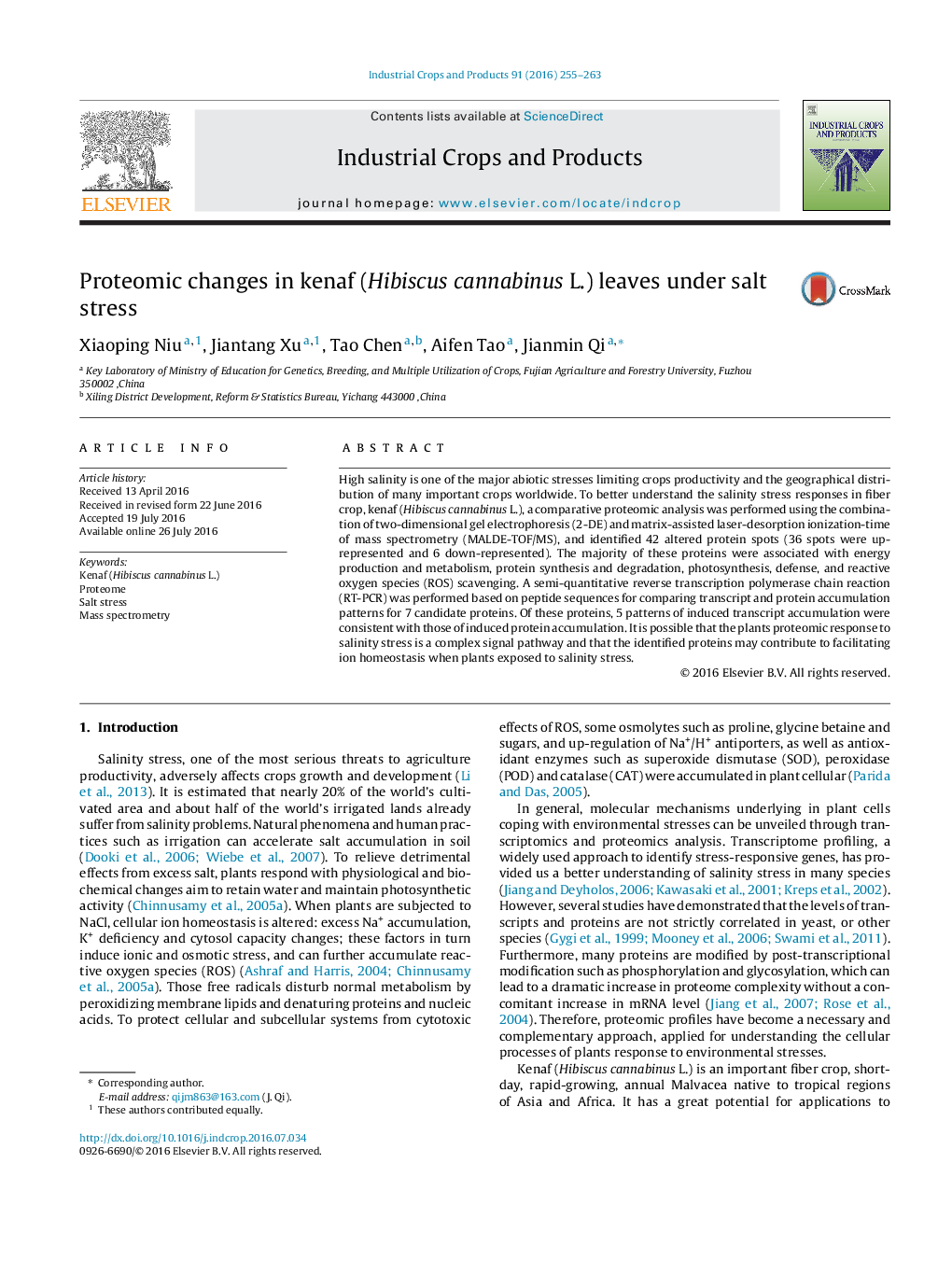| Article ID | Journal | Published Year | Pages | File Type |
|---|---|---|---|---|
| 4511985 | Industrial Crops and Products | 2016 | 9 Pages |
Proteome changes were measured by 2-DE via MALDE-TOF/MS.36 proteins involved in photosynthesis, cell defense, and ROS scavenging.HSP proteins contribute to protecting proteins from denaturation and degradation.Anti-oxidative system contributes to protecting cells from oxidative damage.
High salinity is one of the major abiotic stresses limiting crops productivity and the geographical distribution of many important crops worldwide. To better understand the salinity stress responses in fiber crop, kenaf (Hibiscus cannabinus L.), a comparative proteomic analysis was performed using the combination of two-dimensional gel electrophoresis (2-DE) and matrix-assisted laser-desorption ionization-time of mass spectrometry (MALDE-TOF/MS), and identified 42 altered protein spots (36 spots were up-represented and 6 down-represented). The majority of these proteins were associated with energy production and metabolism, protein synthesis and degradation, photosynthesis, defense, and reactive oxygen species (ROS) scavenging. A semi-quantitative reverse transcription polymerase chain reaction (RT-PCR) was performed based on peptide sequences for comparing transcript and protein accumulation patterns for 7 candidate proteins. Of these proteins, 5 patterns of induced transcript accumulation were consistent with those of induced protein accumulation. It is possible that the plants proteomic response to salinity stress is a complex signal pathway and that the identified proteins may contribute to facilitating ion homeostasis when plants exposed to salinity stress.
